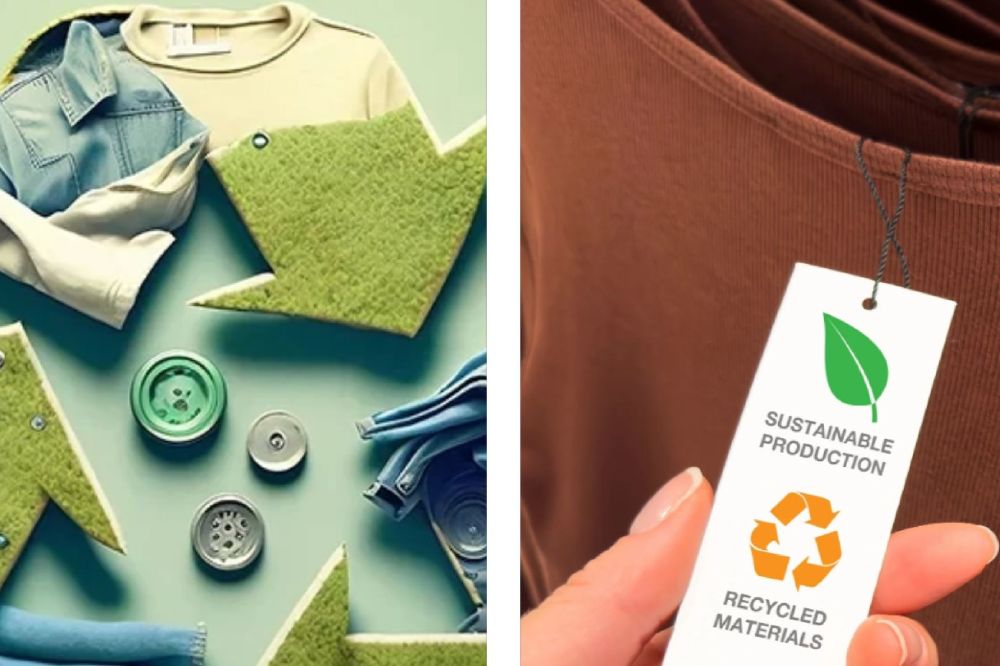The debate around sustainable fashion is gradually taking its peak as environmental consciousness sets the tone for this to be adopted, writes Chioma Emma.

Sustainable Fashion
Given this, fashion industries now find themselves at the centre of a sustainability drive.
Over the years, the conventional fashion industry has recorded huge waste and a very high carbon footprint - and is currently undergoing a revolution that is aimed at addressing these problems.
Giving eco-friendly materials to consumer’s practices, the sustainable fashion industry is reshaping the approach to everyday clothing.
Statistically, the fashion industry is responsible for about 10 percent of the global carbon-emission and 20 percent of waste.
Meanwhile, the fast production cycle of quick fashion has been known to produce tons of millions of textile waste every year.
Circular economies
A 2022 news report by the Ellen MacArthur foundation stressed that less than one percent of clothing is recycled and made into new clothing, thereby pointing out clearly the need for a total shift towards the circular economies.
The industry's sustainability goals are also compromised because of labor exploitation in the supply chains, thereby leading to the need for a more ethical dimension on this subject matter.
Looking at sustainable movement in the fashion industry, one of its aims is to reduce environmental pollution and promote ethical labor practices.
This would basically mean employing eco-friendly materials such as organic cotton, innovative fabrics like animal skin leather and re-used polyester.
Again, the circular economy practices like upcycling, repurposing, buying and selling pre-owned clothing, cloth swap and other resale platforms are gaining more prominence.
Technological innovation
Another typical and important fact here would be technological innovation, where technology is optimising resources and reducing waste.
It's apt to say that government policies and brands are key in addressing sustainable matters, given the impact they have in deciding global economic matters.
Major brands, no doubt, are taking the lead to promote sustainability.
For policy, a typical example is the policy introduced by the European Union which introduced a sustainable textile strategy in 2022 to promote eco-friendly manufacturing and waste reduction.
Consumer decisions
Again, some certifications like the global organic textile standard, fair trade labels and blue sign also provide standards for ethical production, enabling consumers to make decisions on a right note.
A shift in consumer attitudes is driving demand for sustainable fashion.
According to a 2023 McKinsey report, 67% of consumers consider sustainability when purchasing clothing driving demand for eco-friendly fashion.
Consumers are more informed about environmental and social issues, influencing purchasing decisions.
Sustainable practices
He added that sustainability becomes a key differentiator for brands, potentially altering market dynamics, and that companies can capitalise on this trend by investing in sustainable practices.
However, barriers such as higher costs and limited availability still deter widespread adoption.
Innovative subscription models and accessible price points can help bridge this gap.
The problem around sustainability should not be left with brands or governments, consumers should also be at the forefront.
Noble actions like buying less, preferring quality over quantity, and support for ethical brands can really make a difference.
Participating in clothing swaps or donating unwanted garments to second-hand stores also extends the life cycle of clothing as stated earlier.
Seismic shift
The fashion industry is on the verge of a seismic shift. Sustainability is no longer just a buzzword; it's becoming the backbone of the business.
With breakthroughs in bio-fabricated materials and blockchain tech, transparency is taking centre stage.
Consumers are demanding more eco-friendly and ethical practices, forcing brands to rethink their approach.
It's an exciting time for fashion - and a necessary one. Style and sustainability are finally walking hand-in-hand.
Tagged in Fashion Trends

